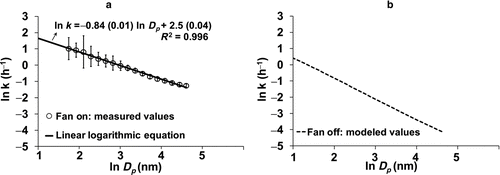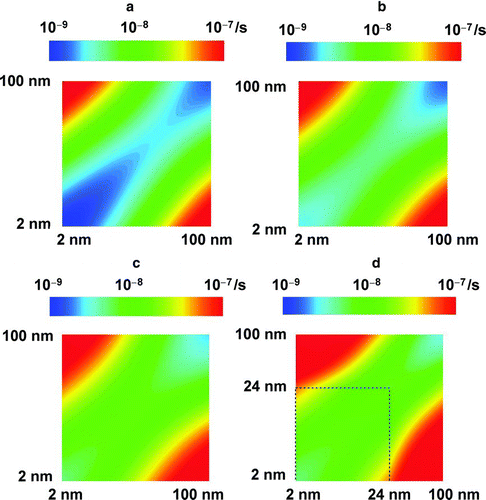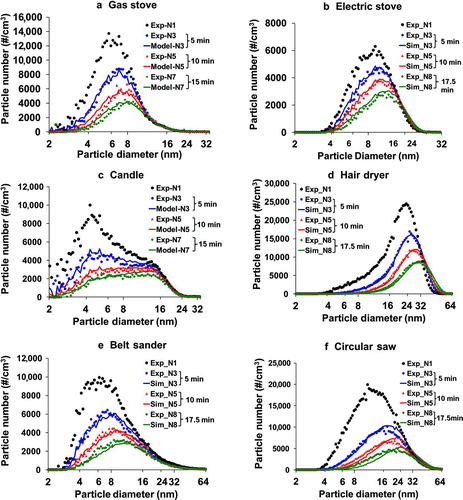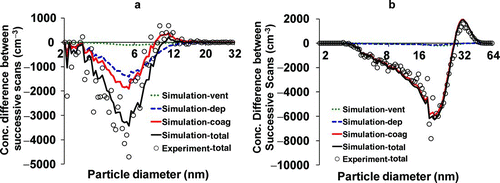Figures & data
TABLE 1 Test conditions
FIG. 1 Double logarithmic plot of particle size (Dp ) and deposition rates (k) for two different experimental conditions: (a) fan on, and (b) fan off. For the fan on condition (a), measured values (points) represent the deposition rates observed with the central fan operating. In this case, the measurement domain is the whole house and particles deposit on air filter, duct surfaces, and indoor surfaces. All error bars represent the standard error of the mean (SEM). A linear logarithmic equation is estimated for the measurements to evaluate the deposition rates for unmeasured particle sizes. For the fan off condition (b), modeled values were derived from the Lai–Nazaroff model. In this case, the entire domain is a single room and the deposition mainly occurred at the room surfaces.

FIG. 2 Coagulation kernel: (a) Brownian; (b) Brownian + VDW with the Hamaker constant of 20 kBT; (c) Brownian + VDW Hamaker constant of 200 kBT; (d) Brownian + van der Waals + Fractal 24 with the Hamaker constant of 200 kBT. Adding the fractal effect does not affect the collision rate within 24-nm limit. Note that the Hamaker constant affects the coagulation kernel only when van der Waals and viscosity forces (VDW) are considered.

FIG. 3 Examples of analytical model fittings: (a) gas stove (GAS1), (b) electric stove (ELEC4), (c) candle burning (CAND1), (d) hair dryer (HAIR4), (e) belt sander (BELTS), (f) circular saw (CIRSAW). The numerals (N1, N3…) refer to the scans following the beginning of the decay period. The discrepancies between measurement and modeling are summarized as average root mean square errors in .

FIG. 4 Size-resolved change in number concentration between first and second scan due to coagulation, deposition, and ventilation: (a) gas stove (GAS1); and (b) hair Dryer (HAIR4). The central forced fan was operating in the GAS1 test, while it was off in the HAIR4 test. Note that the peak concentration for HAIR4 test was approximately twice that for the GAS1 test.
